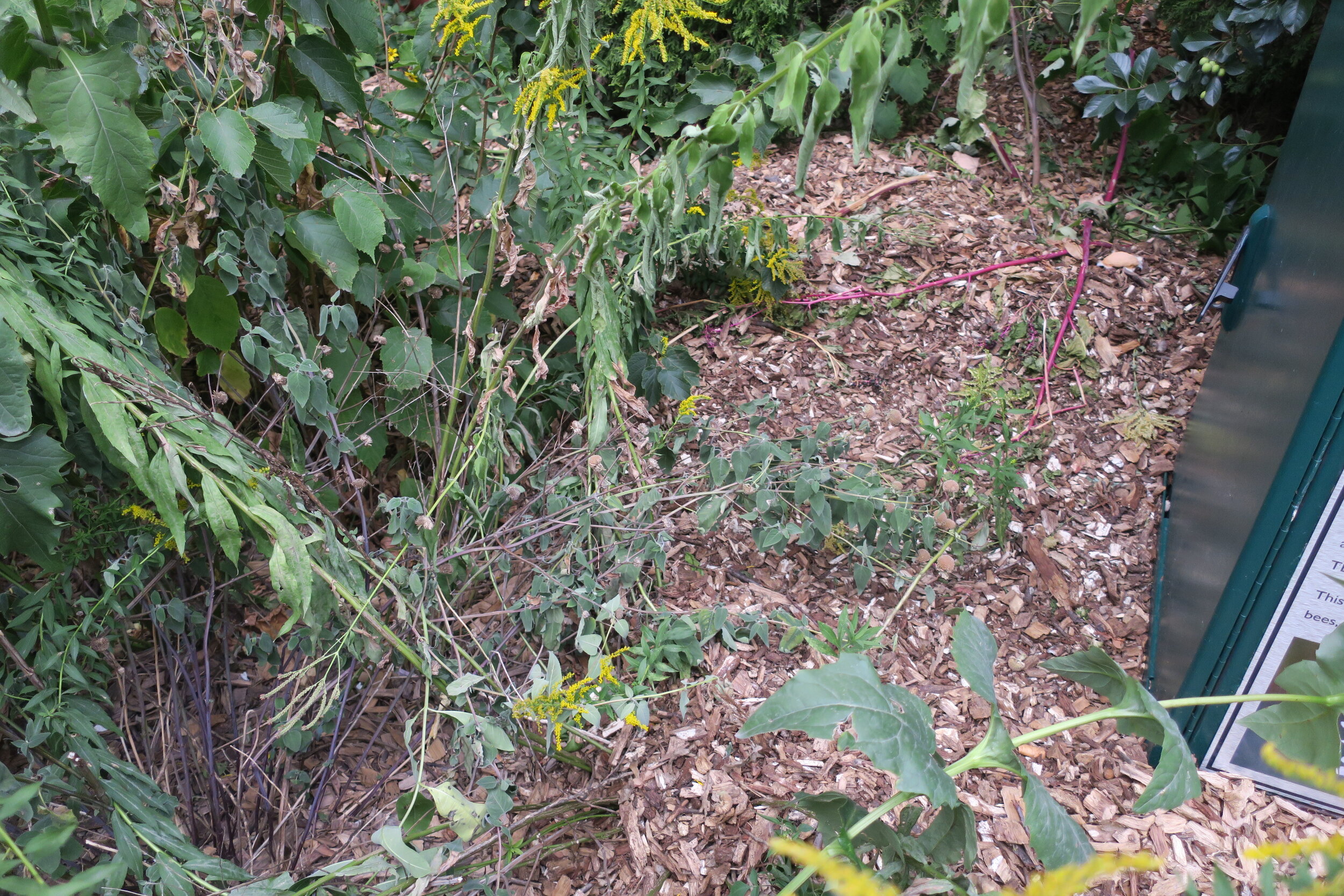Through some kind of perverse tenacity, I tend to gravitate towards impossible sites for planting native plant habitat gardens. But it’s more than willful single-mindedness: I think these are the sites that we desperately need to figure out, especially as urbanization and climate change create difficult conditions everywhere.
My first impossible site was at Harbourfront, on Toronto’s lakeshore, where I was invited, in the early 2000s, to create a garden as part of their Artists Gardens program. I was offered three raised beds, in a building site in a high pedestrian traffic area, in a wind-tunnel, with no water access other than the marina’s murky waters. The soil in the beds was about 6 inches deep, if that.
The site at Harbourfront where I was invited to create a garden, as part of the Artists Gardens series.
I planted a native plant meadow, and despite the challenges, it flourished. I also planted a bed of heritage vegetables and invited people to harvest seeds and food. Weirdly, I discovered that when people are explicitly invited to take things, they rarely do!
The raised bed meadow at my Harbourfront Artists Garden.
My second impossible site was the Portland Place Pollinator Patch, on a busy street in downtown Toronto, surrounded by condos.
The site of the Portland Place Pollinator Patch prior to planting.
We planted a native plant pollinator garden that suffers from every problem imaginable: Salt inundation from the sidewalk in winter. Dogs digging, urinating and defecating, despite the “no dogs please” signage. Soil that has more in common with concrete than with a growing medium. No source of water. Wind tunnel effects from the high buildings. Mulch that won’t stay put in the wind. Late-night stomping from partiers. And yet, many of the native plants have flourished.
The Portland Place Pollinator Patch in its first year of planting.
My third impossible site is a public boulevard in the west end of Toronto that is City-owned but totally unmaintained. In a sea of pernicious weeds and black locust tree volunteers, I have planted three beds for my Sedges Instead project. Digging a trowel into this compacted “soil” gave me the worst blister I’ve ever had.
And yet the native plants, mainly sedges, interspersed with some native pollinator plants, are thriving, thanks to their inherent toughness and the watering that neighbours across the street are kind enough to do.
One of the Sedges Instead beds.
I’m beginning to wonder if any site is truly impossible!









